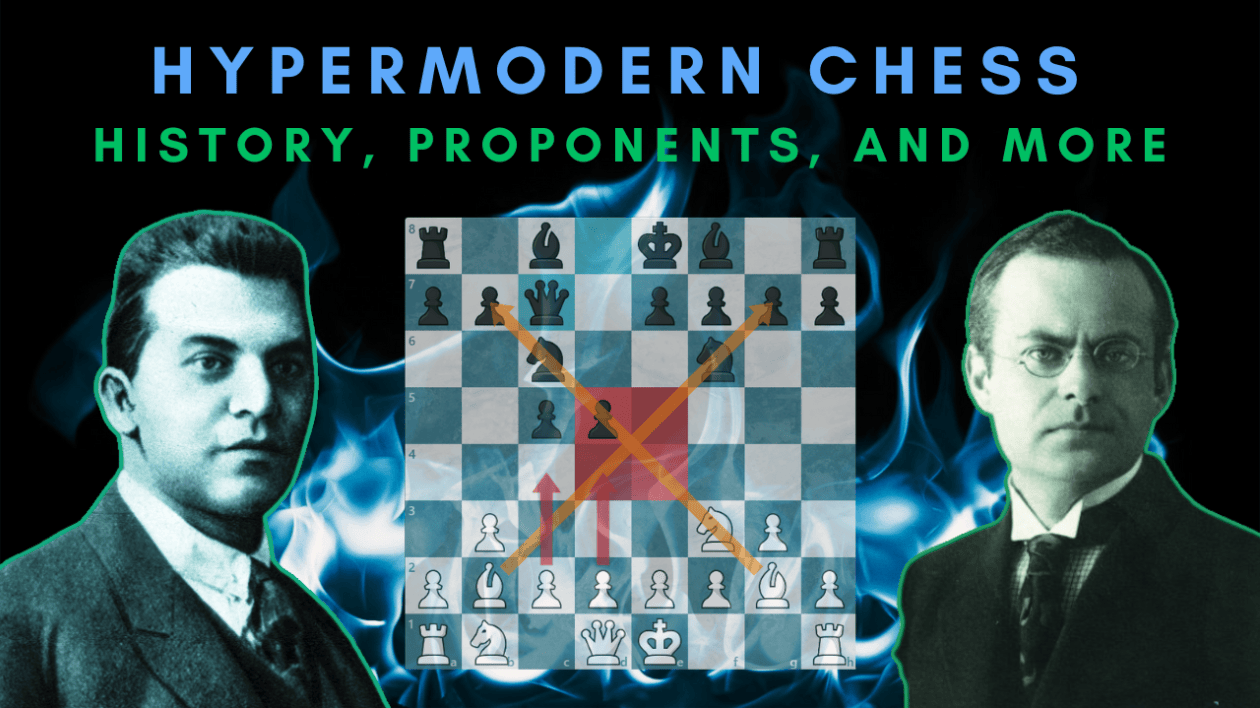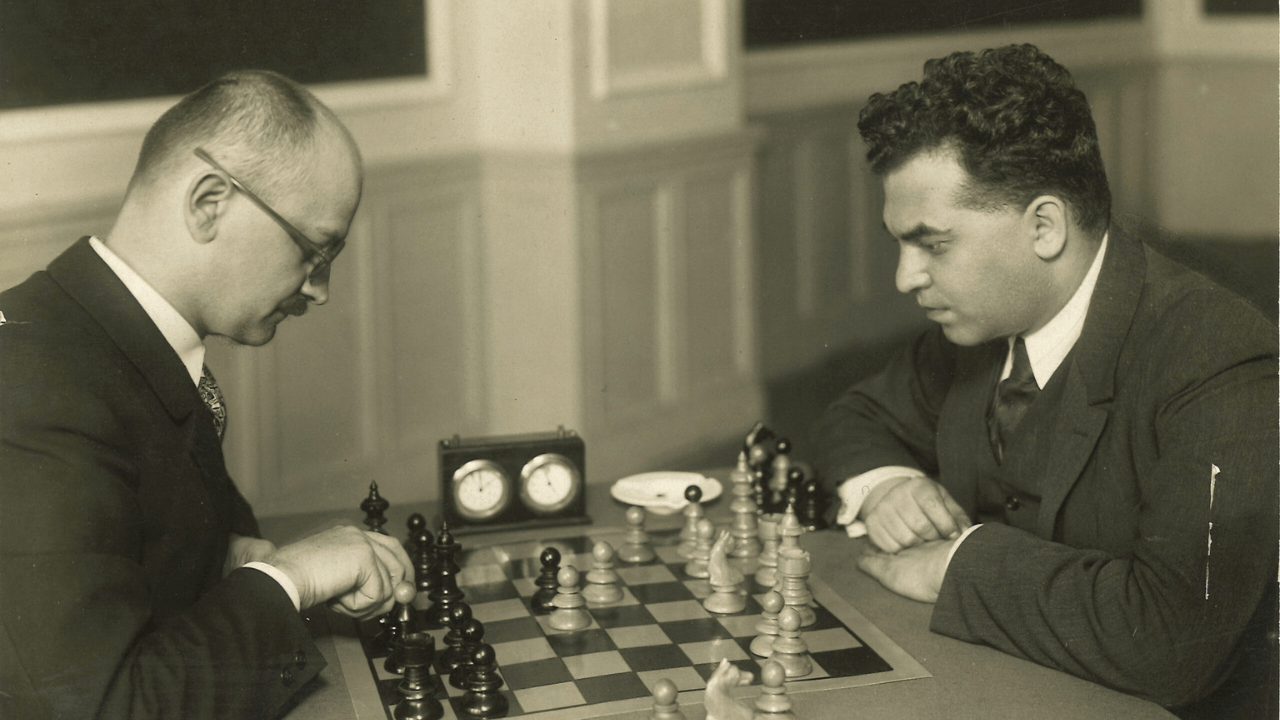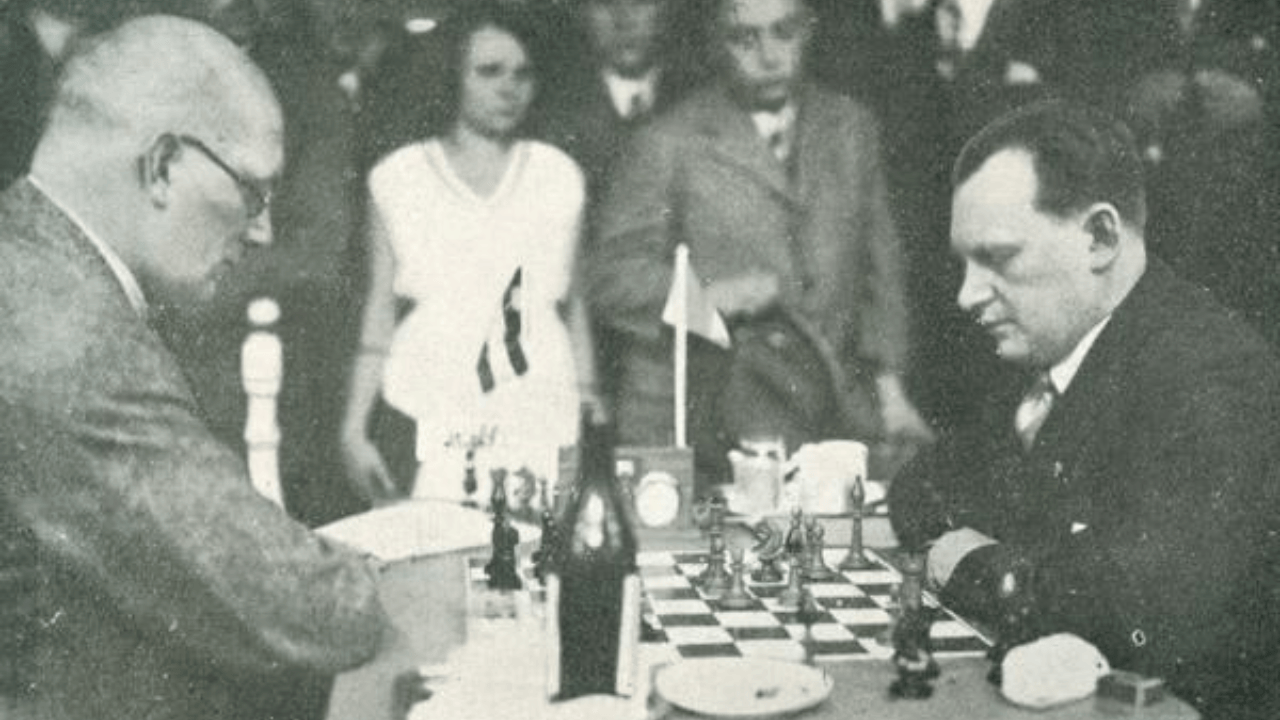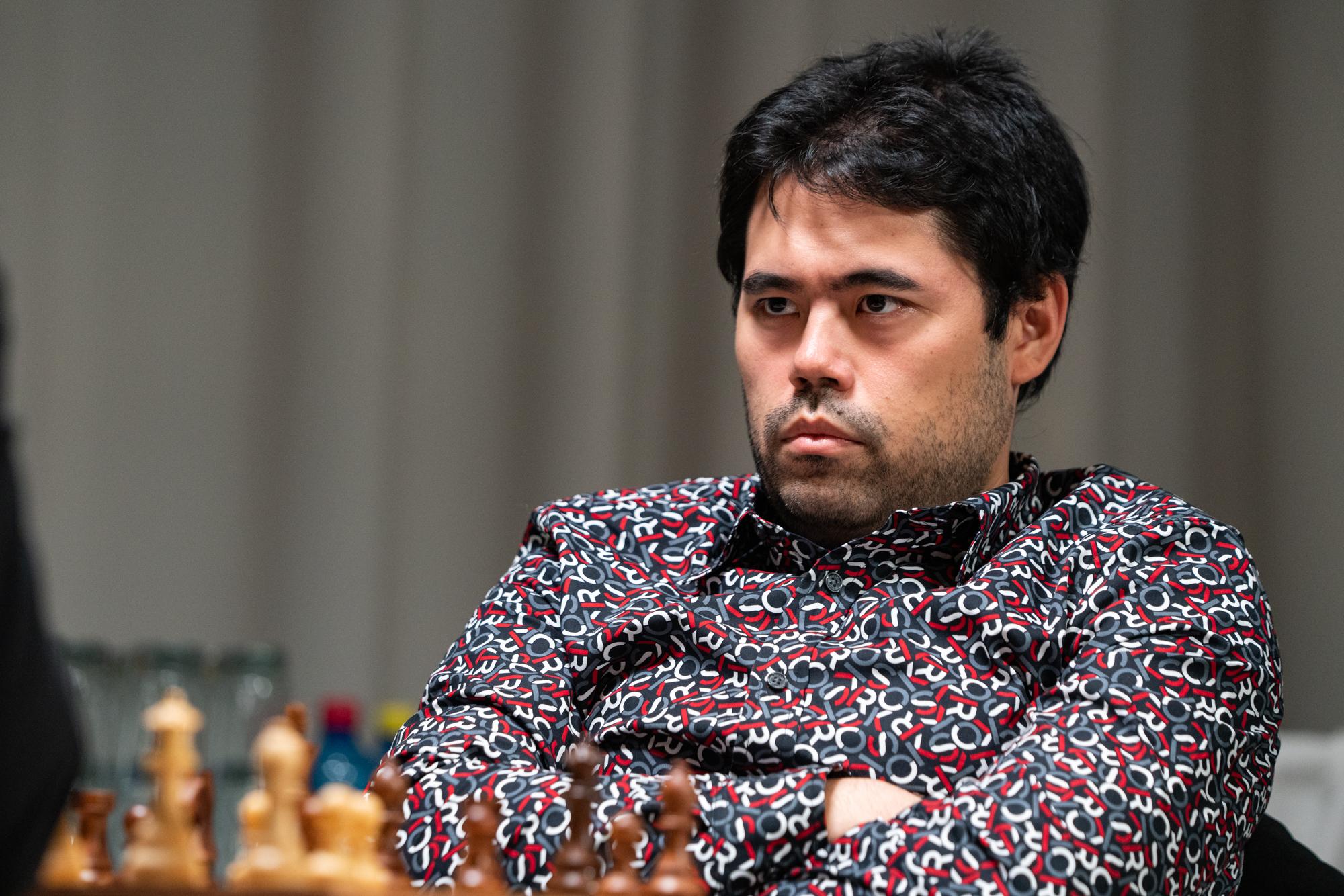
The Habitable Hypermodernism
It has always been accepted that the opening play has three main objectives: to develop the pieces, bring the king into safety and control the center. As a chess beginner, you were/are taught to control the center before doing anything. "Two pawns in the center if you can". This last had been taken to mean occupying the center with pawns, and the ideal formation has always been thought to be pawns on d4 and e4 with white and pawns on d5 and e5 with black. You were/are taught to develop your knights before the bishops, and castle as quickly as possible.
But......don't you feel this stuff can be boring sometimes? Like the same e4 or d4 all the time, black responding with e5 or d5, then white developing the knight or playing the London, etc?
In this blog, we will be exploring the world of the Hypermodern school of chess, and how it changed our understanding of the opening play, but moreover, its history, proponents, popular Hypermodern openings, some breathtaking games, and more!
What's the Hypermodern School of Chess?
HISTORY AND OPENING IDEAS
Hypermodern Chess (also known as hypermodernism) is one of the most influential and game-changing schools in chess history. The so-called "Hypermodern" school of chess revolutionized chess thinking in the period after the First World War and came into prominence in the late 1910s and the early 1920s. The new ideas introduced had a particular impact on the opening play.
The Hypermodern school held that center control was possible without the physical occupation of the center by pawns; instead, the pieces would exert control from a distance. In keeping with this theory, the openings involved the setups that included the fianchetto of the two bishops, i.e., b3 + Bb2 and g3 + Bg2 for white. From b2 and g2 the bishops would exert an influence on all four central squares (d4, e4, d5, and e5).
If Black tried to occupy the center with his own pawns, the idea was that the persistent pressure exerted by the bishops would cause the enemy center to collapse, opening the way for White's own pawns to advance in the center without resistance. Many opening systems like this were adopted for black as well, which we will be talking about later in the blog. Hence, in the early 20th century, hypermodernism challenged the long-held idea that the center needed to be occupied by pawns in the opening.
However, these new theories were controversial in the beginning.
It is believed that it was Howard Staunton who first began exploring and understanding various ideas associated with hypermodernism in the mid-19th century. In the period after the First World War, there were a bunch of people who felt that chess was becoming slow and tedious, and not worthwhile. They believed that chess could not be defined by a simple set of laws and principles, thus popularizing hypermodernism.
But who were these people? And what was their role in popularizing the Hypermodern school of chess?
Proponents and Representatives
These new theories proposed would not have gained any credence if they had not been backed up by practical successes.
This brings us to the question, who popularized hypermodernism? Let's have a deep dive into the proponents and representatives of the Hypermodern School!
RICHARD RETI

Richard Reti (1889-1929) was born in what was then Hungary but he later adopted Czechoslovakian nationality. He was one of the leading representatives of hypermodernism. Other than that, he is known for his contributions to chess as a chess author and as a notable composer of endgame studies.
One of the world's top players in the 1910s and 1920s, he set a world record for playing the most blindfold games simultaneously (29). He won 21, drew 6, and lost just 2 of them.
Reti was one of the very first players who argued that instead of controlling the center with pawns, a player could maintain control from either side of the boards, which would lead to a much more dynamic and innovative game.
This game won the first brilliancy prize at the New York 1924 tournament. One of the most elegant examples of a Hypermodern opening play. White's bishops gain tremendous power when Reti opens up the position, Black tries to free itself tactically but is demolished by a refined combination. This game shows how a single badly-placed piece can poison one's entire position. Black never really recovered from its badly-placed light-squared bishop.
Although Reti was one of the world's leading players in the early 1920s, he was never in a position to challenge for the world championship, and his early death deprived the chess world of one of its most profound thinkers. He left behind two classics of chess literature (Modern Ideas in Chess and the unfinished Masters of the Chess Board) and a collection of games bearing the hallmarks of a great chess artist.
A knowledge of combinations is the foundation of positional chess.
- Richard Reti
ARON NIMZOWITSCH

Aron Nimzowitsch (1886-1935) was one of the strongest players in the world during the 1920s and was also influential as a thinker and writer. He was born in Riga and rose to prominence before the First World War. He resumed his international career after the war and rapidly advanced to the world elite. After a succession of tournament victories, his challenge for the World Championship was accepted by Capablanca in 1926. However, he failed to raise money for the event and the title was passed on to Alekhine in 1927.
Nimzowitsch was, along with Reti, one of the most prominent members of the so-called Hypermodern school of chess. Often regarded as the "Father of Hypermodernism", Nimzowitsch's influence on opening theory was especially profound and several opening lines bear his name. The two most important ones are the Nimzo-Indian Defense and the Nimzowitsch Variation of the advanced French.
Nimzowitsch discovered another way to play for black, which seems very normal now, but at the time was quite revolutionary. His concept was to control the center with pieces rather than pawns, a kinda long-distance command, which will retain much flexibility. This theory was one of the key ideas of the Hypermodern School of chess.
This is probably one of Nimzowitsch's most creative achievements at the board of 64 squares. As early as move 12 he implements a plan that shocks the chess world. The incredible thing is that it seems to work! Johner had no answer to the unique questions facing him. He looks on as a virtual spectator as Nimzowitsch slowly but surely takes the life out of White's position. Positional domination is often the key to a decisive tactical flourish. A game of pure joy!
Nimzowitsch continued to be an active chess competitor at the top level between 1927-31, but after 1931 he could not maintain his level of play and was no longer a realistic title contender. He fell ill in 1934 and died from pneumonia some months later. Considered to be one of the most important players and writers in chess history, he wrote three important books of which two, My System (1925) and Chess Praxis (1929) are regarded as classics of chess literature and are still in print.
Many men, many styles; what is chess style but the intangible expression of the will to win.
- Aron Nimzowitsch
SAVIELLY TARTAKOWER

Savielly Tartakower (1887-1956) was born in Russia but later settled in Vienna in 1899, however, he accepted Polish citizenship in 1918. He had already become a leading player before the First World War, winning matches against players like Reti, but it was in the 1920s when his career its peak. In 1924 he moved to Paris and in the next six years won several tournaments, including the Gold medal for Poland at the Hamburg Olympiad in 1930.
It's hard to define Tartakower's playing style. He loved to experiment with his openings and seemed to admire paradoxical ideas. His best games are a treat to watch, but sometimes his love of the eccentric cost him valuable points.
A few causal moves by White allowed Black to launch a kingside attack and make a brilliant rook sacrifice. Maroczy didn't seem to realize the potential danger. What makes this sacrifice special is that it is largely positional, Black obtains a few pawns but has secured an unshakeable grip on the position. White struggled, but the net tightened and Maroczy collapsed under the pressure. This game shows that if your opponent is building up an attack, it is necessary to take defensive measures in good time.
While Tartakower was undoubtedly one of the top ten players during his period, he was not generally regarded as a potential challenger for the world title. During the 1930s his results tailed off, although he remained a strong and active player until 1950. His writings are highly regarded, his two-volume My Best Games of Chess is an excellent games collection, containing not only some very fine analysis but also some humor.
In chess, there's only one mistake: over estimation of your opponent. All else is either bad luck or weakness.
- Savielly Tartakower
EFIM BOGOLJUBOV

Efim Bogoljubov (1889-1952) was born the same year as Reti, in Ukraine, but became a German Citizen in 1927. He began playing chess at the age of 15, which is relatively a late start if compared to other top players. He took the game seriously at the age of 18, did not finish his studies, and instead focused on chess. He was one of the leading practitioners of the Hypermodern School.
Although his career was far longer than Reti's, his greatest achievements were also in the 1920s. His best result was the victory in the Moscow 1925 tournament, where he took first prize by a massive 1.5-point margin over a field that included all the leading players of the time except Alekhine. This and other successes led him to challenge Alekhine for the world title in 1929, but he lost decisively. A second world-title match between the two players again ended in a defeat for Bogoljubov (1934).
The game began with a French, but an early mistake by Black provided White with a strong positional grip. Efim secured the position for its knight on the e5 square (an outpost) and made a timely trade of his bishop for Alekhine's knight. Alekhine did try for a counterattack on the queenside, but mistakes by Black helped White to take the initiative. White we then saw was a beautiful piece of art by Bogoljubov, and Alekhine ended up resigning in a lost king-pawn endgame.
Bogoljubov continued to compete with some success during the late 1930s, but then his results gradually declined, although he won the German Championship as late as 1949. He was awarded the GM title by FIDE in 1951.
When I am White, I win because I am White. When I am Black, I win because I am Bogoljubov.
- Efim Bogoljubov
ERNST GRUNFELD

Ernst Grunfeld (1893-1962) was a strong Austrian Grandmaster. He spent his early childhood in severe poverty, however, he discovered the game that would change his life. He studied chess intensely from the very beginning and earned a reputation as a skilled player in his local chess club.
The First World War badly affected Grunfeld's chances of playing the best in the world. However, he continued to study the game, and for a few years in the 1920s, he was probably in the world's top ten players. He spent much of his time studying openings and was an opening theoretician and one of the main proponents of Hypdermodernism. Today he is chiefly remembered for having invented the Grunfeld Defense which is one of those workhorse openings played day in, day out by grandmasters all around the globe.
Grunfeld played solidly from the beginning, avoiding any possible mistakes and miscalculations in one of the most dynamic chess openings. The mistake on the 25th move by Alekhine was probably the key point in the game. Grunfeld pounced on the opportunity with the right follow-up, and the result was that Black was now up an exchange against the future world champ. Further, Grunfeld finished off with a clean conversion. What a game, phew!
Grunfeld continued to play in the 1930s but with less success. The Second World War eventually ended in career, although he did play in a couple of strong events in Vienna just after the war. He played his last tournament in 1961 and died in the very next year, 1962.
I never make a mistake on the first move!
- Ernst Grunfeld
And with that, we end our list of the players who were five of the main proponents and representatives of the Hypermodern School of Chess.
Honorable mention: Gyula Breyer
The ideas of the Hypermoderns were gradually assimilated into chess thinking; one of their theories which has gained universal acceptance is that a pawn center that is insufficiently supported by other pieces isn't strong, but weak. Hypermodernism had slowly but surely started to gain popularity, and the Hypermodern opening play was accepted and admired by many players of the future generation including the great Robert James Fischer himself.
Many opening systems have been developed with the specific purpose of luring the opponent into a premature central advance; this overextension is then punished by a vicious counterattack. Let's have a look at some of the popular Hypdermodern openings.
Popular Hypermodern Openings

The King's Indian is an aggressive Hypermodern opening for black against 1.d4. In this sharp opening, Black allows white to take the center with pawns but later counter-attack. It was adopted by many of the champion players including Bobby Fischer and Garry Kasparov.
This opening leads to many fascinating positions and Black fights for an advantage instead of equality. On the other hand, white looks to take as much central space as possible and put considerable pressure on the queenside. It's a risky opening where Black often gets an attack against the White king, leading to many decisive games.
Wow, just wow. This is Hikaru at his peak. Wesley So had no answers to the questions asked by one of the best KID players of all time. This is how lethal King's Indian can be.
One of the cousins of the KID, the Queen's Indian is a solid Hypermodern opening choice for black, which leads to a "risk-free" game. It is playable at all levels, however, one must have some understanding of the positional concepts in chess. Former world champion Anatoly Karpov is often regarded as the best Queen's Indian player of all time.
Unlike the KID, it's a risk-free and flexible opening where Black enjoys smooth piece play. White does get a space advantage but it's really tough to exploit weaknesses in the Black's position, so is the solidity of the opening.
Here's a game that I played against IM Peter Large (@Plimsol) in the Queen's Indian Defense:
Even though I lost, I am really proud of this game and my play. We both played with high accuracies, with Chess.com giving me an estimated rating of 2300. I played till the end instead of resigning because it was my first game against a titled player lol.

Let's move on to the next opening...........
We have already met this opening in the proponents' section. This opening is one of the popular responses to the queen's pawn opening for Black. It's a positionally sound opening that leads to rich positions and was invented by none other than Aron Nimzowitsch as we saw above.
Back often gives up the bishop pair for better pawn structure and rapid development. White has to choose one from about 10 options after facing the Nimzo (e3, Qc2, Bg5, f3, a3, and more). Black intends to keep the position closed whereas White tries to break open the position and bring its bishops into play.
That was a short but breathtaking game. White finishes off in style with a dazzling queen sacrifice. Black's miscalculated defense was enough for the eval bar to rise in White's favor.
The Nimzo is one of the best replies to White's 1.d4, the pin on the c3 knight is hard for White to deal with, and Black often gets great and pleasant positions.
King's Indian Attack and the King's Fianchetto Opening
In this section, I will talk about 2 similar looking Hypermodern openings for White.
The King's Indian Attack, often known as the reversed KID, is a positional and flexible chess opening for white. One of its advantages is that it's not very theoretical like the ones we saw above. The first four moves for white are fixed before he/she decides to do anything else.
White many times launches a kingside attack against the Black king. It became popular in the 1960s when Bobby Fischer won several games with this opening as White.
The King's Fianchetto opening is another Hypermodern opening for White, the only difference between KIA and this opening is that White begins with 1.g3 instead of Nf3, hence providing Black with the freedom to play 1...e5.
Black is provided with the freedom to create a big center, but White's play is flexible and positional with a possible queenside pressure in the future. We have seen Hikaru Nakamura play this opening in many of his online and OTB speed games, and even at the classical time control.
Here's a game from the 1978 World Chess Championship that featured this opening:
Woah, how many times have we seen this opening in championship games? Korchnoi made it look so easy. Most of the middlegame and the early endgame play was on the queenside, which Korchnoi got the better off.
Let's move on to the next and final opening in our list...
Named after the great Danish GM Bent Larsen, this opening is known as the "Nimzowitsch-Larsen Attack" because it honors Aron Nimzowitsch's legacy on the Hypermodern opening play, especially right out of the opening. White develops its queenside bishop very early on g2, immediately pressuring Black's kingside.
The early fianchettoed queenside bishop will put a healthy amount of pressure on the long diagonal. It's a provocative, easy-to-learn and play opening.
The best-known win for White in the Larsen opening probably came in the year 1970, when Bobby Fischer completely decimated his opponent with the Nimzowitsch-Larsen.
When used to perfection, this is what Larsen's opening looks like. Fischer emerged a pawn-up after a beautiful tactic and converted his advantage to a win in the endgame neatly and comfortably.
And with this, we end our openings list here!
Other Hypermodern openings which weren't included in the list: Catalan, Bogo-Indian Defense, Grunfeld Defense, Modern Defense, Pirc Defense, Old Indian Defense, etc.
Hypermodern Chess Today
Hypermodern ideas are still very popular to this day. The most common reply to 1.d4 is 1...Nf6, which often leads to Nimzo-Indian and KID positions. 1.Nf3 and 1.b3 are very common at the top level of chess, played by super GMs like Magnus Carlsen and Hikaru Nakamura in speed chess.

Conclusion
With this, we can conclude that Hypermodern opening play is worth a try, many top players have made it a part of their main opening repertoire. As mentioned at the beginning, Hypermodernism is one of the game-changing schools in chess history.
This is the end of this blog, I hope you learned something new today. Thanks for taking out your valuable time for reading this, appreciated. I am open to all types of feedback, whether positive or negative, so do share them if you got some in the comments. Also, this was my first blog as a Top Blogger, thanks to Chess.com for providing me an opportunity to write on the biggest stage. Thanks to the people who supported me in this journey as well.
Also, shoutout to "The Mammoth Book of World's Greatest Chess Games" for helping me out with the game analysis for a couple of master games, and to @Porcyyyy for helping me out with the images.
Again, thanks for reading, and until next time, I am outta here.
